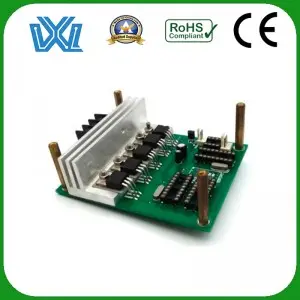In electronics, the integration of advanced technology and efficient design is critical. Two important contributors to this field are pulse code modulation (PCM) and printed circuit boards (PCB). PCM and PCB are widely used in various electronic devices, and each has its own advantages and characteristics. In this blog, we’ll dissect the differences and capabilities of PCMs and PCBs to determine which option is better for your needs.
PCM (Pulse Code Modulation):
Pulse Code Modulation is a digital method for representing analog signals. It converts analog signals into digital form and is mainly used in audio applications such as recording and music production. PCM periodically captures the amplitude of each sample of an analog signal and represents it digitally. This sampling technique accurately reproduces the original analog signal. PCM provides excellent sound clarity and is known for its high fidelity, making it ideal for designing audio systems and equipment that require uncompromising sound quality.
PCB (Printed Circuit Board):
Printed circuit boards are the physical basis of electronic devices, providing a platform for the interconnection of various components. A PCB consists of conductive paths etched into a non-conductive substrate to provide electrical connections and mechanical support for components. PCBs facilitate the arrangement and interconnection of various electronic components such as resistors, capacitors and microchips. The flexibility of PCB design allows for complex circuit arrangements, making it widely used in various industries such as telecommunications, aerospace, and consumer electronics.
Distinguishing factors:
1. Function:
PCM mainly focuses on digital audio signal processing to provide high-quality sound reproduction. On the other hand, PCBs contribute to the overall functionality of electronic devices, facilitating the interconnection of various components and providing stability to the system. While PCMs are an integral part of audio systems, PCBs are used in nearly every electronic device, from smartphones to medical equipment.
2. Design complexity:
PCM mainly includes software algorithms and advanced signal processing techniques. While it requires expertise in audio engineering and programming skills to optimize its performance, it is relatively simple in terms of physical design. In contrast, PCB design requires careful layout planning, component placement, and electrical connection analysis. It requires knowledge of electrical engineering and effective design practices to achieve the desired functionality.
3. Versatility:
PCM is specifically designed for audio applications to ensure accurate sound representation and minimize distortion. Its main goal is to preserve the integrity of the audio signal in the digital domain. On the other hand, PCBs are not limited to any particular application or industry. Their versatility allows them to be customized to meet the requirements of any electronic device, be it a portable music player or a satellite communication system.
in conclusion:
Both PCMs and PCBs are important contributors to the field of electronics, each serving a unique purpose. PCM is the first choice of sound engineers and audiophiles for impeccable audio quality. PCBs are the foundation upon which complex electronic systems are built, ensuring proper connectivity and stability. Although PCMs and PCBs differ in function and design, they are often used together in electronic devices, combining their unique strengths.
Ultimately, it comes down to the specific requirements of your project or equipment. Understanding the differences and characteristics of PCMs and PCBs will enable you to make an informed decision based on your needs. So whether you’re building a hi-fi system or creating multifunctional electronic equipment, PCMs and PCBs are important tools for advancing technology.
Post time: Jul-03-2023

